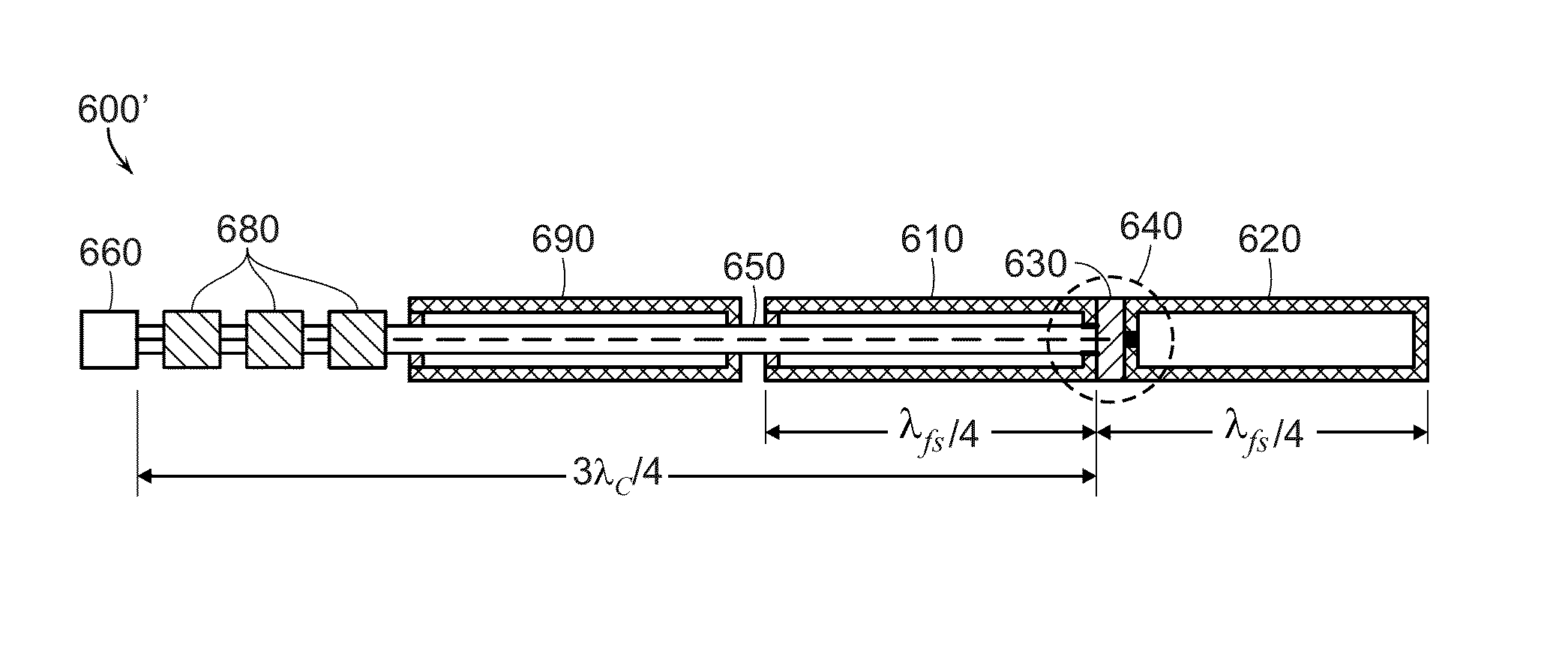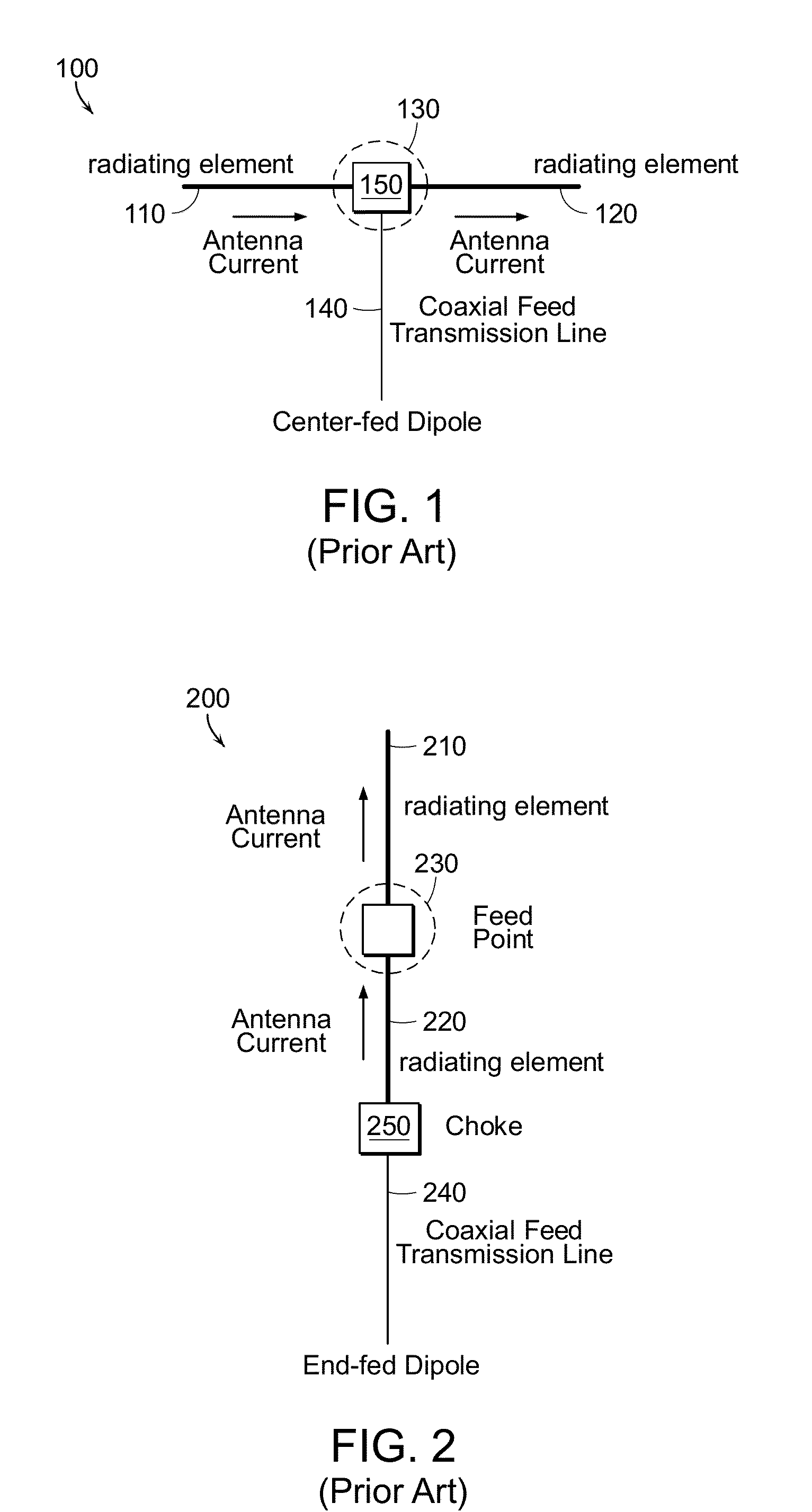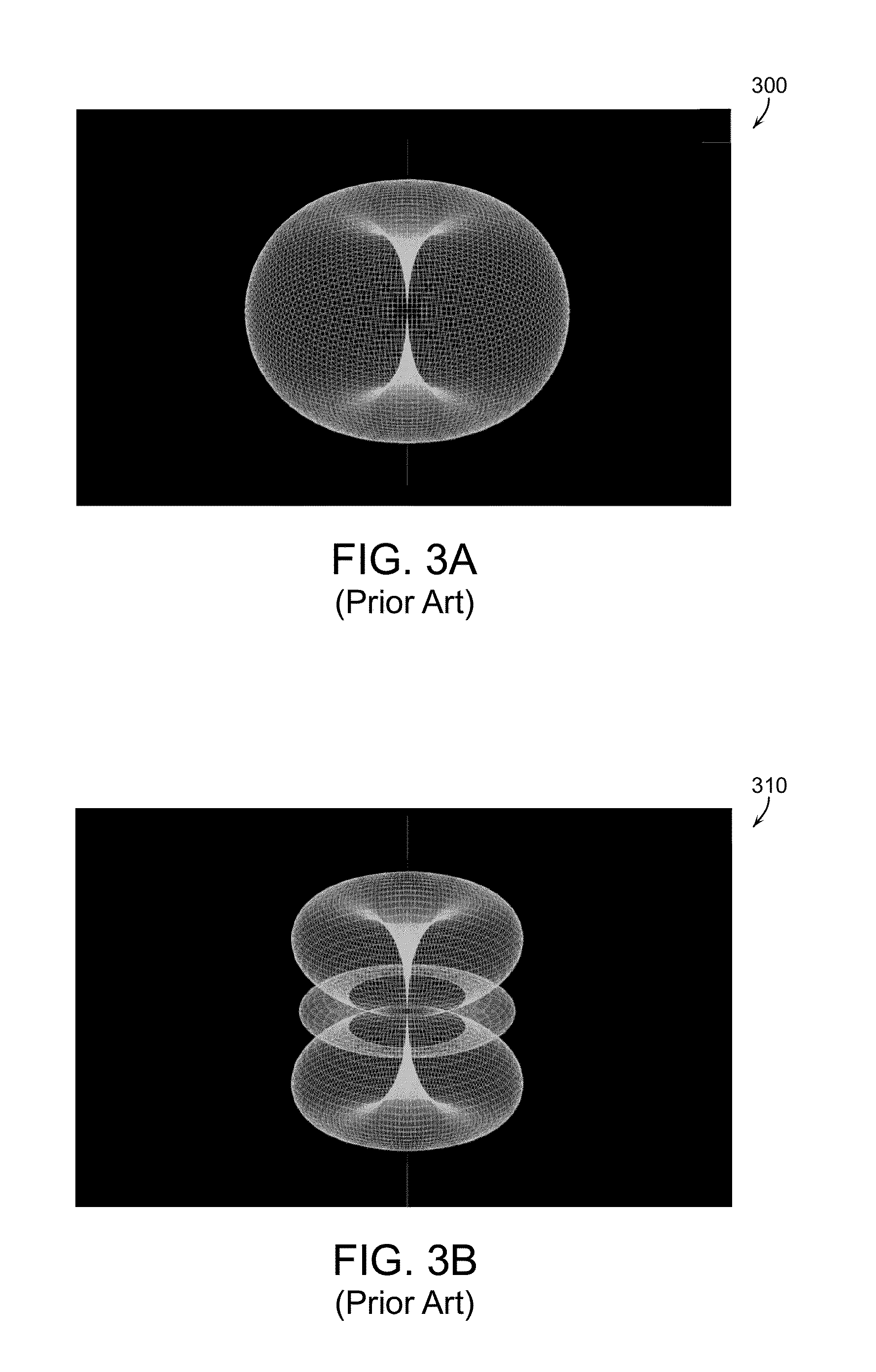End-fed sleeve dipole antenna comprising a ¾-wave transformer
a dipole antenna and transformer technology, applied in the field of linear dipole antennas, can solve the problems of poor test results, poor mechanical stability, and poor quality of ota test measurements, and achieve the effect of improving mechanical stability
- Summary
- Abstract
- Description
- Claims
- Application Information
AI Technical Summary
Benefits of technology
Problems solved by technology
Method used
Image
Examples
Embodiment Construction
[0052]Conventional end-fed dipoles employing ¼-wave choke sleeves and ferrite-based choke beads suffer from poor impedance match and narrow bandwidth, and thus, fail to provide good pattern performance over a wide operating frequency range. To overcome the disadvantages of conventional dipoles, an impedance transformer is used herein to provide both transformation and compensation for an improved end-fed sleeve dipole. In some embodiments, a shunt resonator may be used in combination with the impedance transformer to provide additional impedance compensation. In preferred embodiments, the impedance transformer improves pattern performance while maintaining a simple mechanical design. This simplifies the fabrication of the end-fed dipole, reduces fabrication costs and ensures compatibility with a number of different choking schemes, including a single ¼-wave choke, a single ¼-wave choke sleeve with additional ferrite beads, and two or more ¼-wave choke sleeves with or without ferrite...
PUM
 Login to View More
Login to View More Abstract
Description
Claims
Application Information
 Login to View More
Login to View More - R&D
- Intellectual Property
- Life Sciences
- Materials
- Tech Scout
- Unparalleled Data Quality
- Higher Quality Content
- 60% Fewer Hallucinations
Browse by: Latest US Patents, China's latest patents, Technical Efficacy Thesaurus, Application Domain, Technology Topic, Popular Technical Reports.
© 2025 PatSnap. All rights reserved.Legal|Privacy policy|Modern Slavery Act Transparency Statement|Sitemap|About US| Contact US: help@patsnap.com



